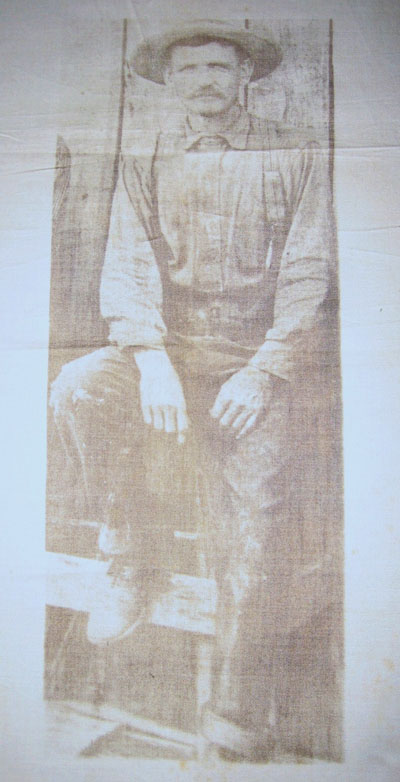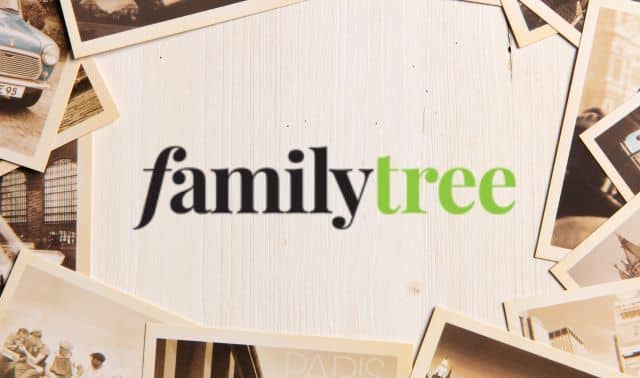Sign up for the Family Tree Newsletter Plus, you’ll receive our 10 Essential Genealogy Research Forms PDF as a special thank you!
Get Your Free Genealogy Forms
"*" indicates required fields
Jeff Fee wrote and asked if I’d ever seen a photograph like this before—it’s on silk.
The answer is yes. I actually own one, of my paternal grandmother. Based on my grandmother’s birth year of 1892 and her approximate age in the photo, it was made circa 1910. It’s a head and shoulders view of her in a gorgeous dress.
The picture Jeff submitted is a full view of a man in work clothes:
Photographs on silk debuted in 1879, when a silk manufacturer in Lyon, France, coated silk with light-sensitive salts of silver. According to the Oregon State Journal dated January 18, 1879, the firm displayed various sized silk pictures including copies of “old master” paintings.
Photographic fads took many forms from those little gem tintypes no larger than a thumbnail (thus giving them a nickname) to these lovely images on cloth. You’re probably familiar with photographs on metal (daguerreotypes and tintypes), glass ambrotypes and of course, paper-based prints. Photo chemicals applied to a variety of surfaces could result in an image. For instance, I own a set of china teacups with a little girl’s picture on them. In Jeff’s case, his photo is on a piece of silk.
Jeff has questions relating to his picture:
- Who’s depicted? The man is Jeff’s great grandfather, John Henry Ruble (1863-1940) He lived in Wood County, West Virginia before moving to Haydenville, Ohio in the 1920s.
His work clothes could date from the late 19th century to the early 20th. He wears a collared work shirt, rolled-up jeans and a hat to shield his face from the sun
If you examine the left side of the picture, there seems to be someone standing there. This suggests that this picture is a copy of a section of a larger photograph. It’s possible that this is a work photo where he stood with several co-workers. he worked at a sawmill circa 1900.
- Why was it made? It’s 5 inches by 14 inches in size—not a standard size for a picture. It’s difficult to know why this image was copied. Jeff surmised that perhaps it was for the man’s funeral. That’s possible. It’s also possible it was made as a 25th anniversary present in 1913
- When was it made? Images on silk were commonly available in the early 20th century, which is likely when this photograph was produced.
- Who made it? Many of Jeff’s relatives frequented Loomis Photographers in Parkersburg, West Virginia. It’s possible the studio advertised this photographic method in newspapers or a city directory. A local historical society may have other examples of this type of picture.
Jeff’s image already has started to fade. If this is an important part of his family heritage, it would be worth seeking out a professional photo conservator with experience working with images on cloth to see if the fading can be stabilized. An online directory of conservators is on the American Institute for Conservation of Historic and Artistic Works.
Solve your family photo mysteries with these books by Maureen A. Taylor:
ADVERTISEMENT





